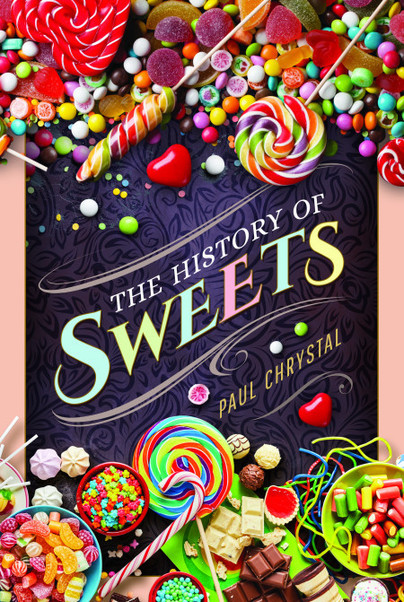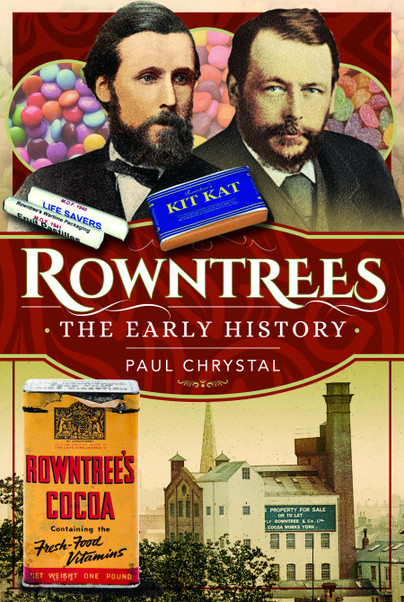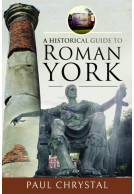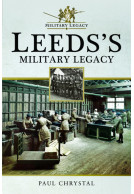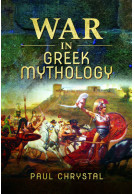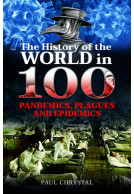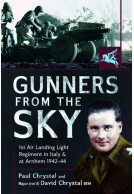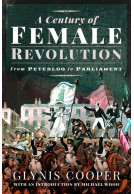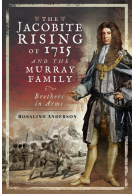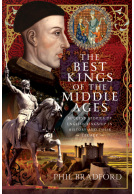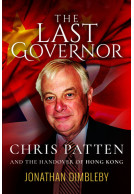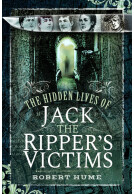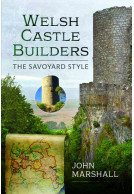The History of Sweets (Hardback)
Imprint: Pen & Sword History
Pages: 256
Illustrations: 32 colour illustrations
ISBN: 9781526778857
Published: 15th July 2021
Publicity!
Article: 'A new book about sweets looks at the Bradford humbug poisonings, writes Helen Mead' as featured by Telegraph and Argus, 19/8/21
(click here for international delivery rates)
Need a currency converter? Check XE.com for live rates
| Other formats available - Buy the Hardback and get the eBook for £1.99! | Price |
|---|---|
| The History of Sweets eBook (14.9 MB) Add to Basket | £6.99 |
We all know our sweets. We all remember sweets – objects of pure delight and the endless cause of squabbles, fights even, hoarding and swapping; a chance to gorge, suck, crunch and chew. But they’re by no means just a nostalgic thing of days past, and it’s not only children who love and devour sweets – gobstoppers, bulls eyes, liquorice, seaside rock, bubble gum and the like; grown-ups of all ages are partial to a good humbug, or a lemon sherbet or two – in the car, (annoyingly) at the cinema or while out walking – wherever and whenever, the sweet is there, the sweet delivers and the sweet rarely disappoints.
Sweets then are ubiquitous and enduring; they cross age, culture and gender boundaries and they have been around, it seems, forever. This book tells the story of sweets from their primitive beginnings to their place today as a billion pound commodity with its sophisticated, seductive packaging and sales, advertising and marketing. It explores the people’s favourites, past and present; but there is also a dark side to sweets – and this book does not shy away from the deleterious effect on health as manifested in obesity, tooth decay and diabetes. It delves into sweet and lollyshops in supermarkets and markets, retro sweet shops, fudge makers, vintage sweets on line, sweet manufacturing, chocolate, the grey line between sweets and ‘medicines’ ancient and modern. It goes round the world sucking, licking and crunching sweets from different countries and cultures and it examines how immigrants from all nations have changed our own sweet world.
I enjoyed learning the history behind sweets. It reminded me a lot of a show called "unwrapped" where they take you through the history and the making of candy. If you enjoy reading non-fiction and/or learning the history of various foods, you'll enjoy reading this book.
NetGalley, Lyndsey A
As featured in The Guardian: Coffee cremes, coins and selection boxes: chocolatiers revive classics in bid for bumper Christmas.
Alice Fisher, The Guardian
Rating: 5 out of 5 stars
NetGalley, Alina Melinda
As someone who enjoys sweets and has quite an addiction that I'm trying to get rid off, this book was fascinating to read. I love that the downside was also presented in the book. Very well documented.
"There is much to get your teeth into within these pages"
Best of British Magazine, January 2022
It is 4 stars from me for this one, I really enjoyed the layout too and the different sections of the manufacturers and the release dates of the different products – really made me realise how long song of them have been around for! Highly recommended even if it did give me the urge to raid the kitchen cupboards more than once!!
Donna's Book Blog
Read the full review here
Article: 'A new book about sweets looks at the Bradford humbug poisonings, writes HELEN MEAD' as featured by
Telegraph and Argus, 19th August 2021
I found not only the history and beginnings of my favorite sweets fascinating, but I also found the corporate side of it fascinating too! It might make your tummy sick, as when you eat too many Gobstoppers or Lik-A-Stiks, but you is something that we all need to read and digest so that we can better understand the "dark side" of the sweet industry. I know when I'm walking down the street, I can smell a candy store a mile away, as my body craves the stuff, even though I don't eat it as much as my tastebuds might want me to.
NetGalley, Sandra Brower
Paul Chrystal deep dives into this addicting world and never lets us down until the sugar high hits its low. This book is a read for those who are not only interested in history, but also for the education of the effects your body goes through and the warnings you might not want to read but should.
A wonderful compilation of all things sweet, everything from chocolate to licorice to honeycomb. I took a journey down the timeline of when they were first introduced 8,000 bc to here and now. Its a fascinating read that opened my eyes to all the uses that certain sweets were used for like lozenges and comfits. It soon became apparent that not all sweets were actual treats in the beginning, quite a few were used for medicinal purposes then later became more. The advertising that was used throughout the years was eye opening and has definitely come a long way. As I went through the years I learned about where and how they were manufactured and the part somethings played in different time periods such as the war. There was so much I didn't know about the things I enjoy on a daily basis but I had a great time in learning all that this book had to share. If you enjoy reading, love sweets, and like learning new and interesting things this is definitely a book to add to your to be read list.
NetGalley, Taryn Lee
As I read this book I have been slowly eating my way through a bag of old-fashioned pear drops, which I thought appropriate as we were reading about old-fashioned sweets. What a fantastic book as it’s so comprehensive and fun. The book covers almost everything about sweets from how they were made, where they were made and which company made them, with a history. It really does cover the history of each sweet, it’s origins and even provides a lot of publicity, advertising and media around the sweets too. But also it’s not just British sweets that are covered in the book, but also international sweets and how they performed in the British market.
UK Historian
Read the full review here
The History of Sweets by Paul Chrystal is the second book I read by this author. The first one was Rowntree’s, reviewed last month. I loved that one and I loved this book too. There are some parts overlapping, as expected, but it didn’t bother me at all, I actually liked reading again some snippets.
Coffee and Books
This is a good book for so many reasons. First of all, it is a presentation of the history of sweets that includes all sort of details, including what was used thousands of years ago, which is very interesting. He gives details on sweets from around the world, from Japan to Scotland. Chocolate has a special place in the book, as one can easily imagine.
I was very intrigued by how many sweets are made in UK. He also talks about advertising and marketing. I was prepared to read about slavery, but I did not expect for him to tackle modern-day slavery and point the finger at Cadbury and the still existing child labour within their supply chain. I applaud him for this. At one point he mentions that many cocoa growers never tasted chocolate in their lives… and that happened in the 18th century and is, again, happening today. It is appalling that we have, as a society, so little care for how our food is sourced that thousands of people work their whole lives without knowing what the fuss about chocolate is all about. Thus I use the most powerful and sophisticated weapon I have at my disposal: my money; I buy only fair-trade and vegan chocolate and cocoa, and I pay attention to the sustainability of the palm oil too.
Chrystal touches on the health aspects too, from food adulteration to problems with obesity, tooth decay, and diabetes. But this is not a book about the dark parts, they only make a part of the story, as they should. Most of the book is about the great things about sweets, differences between cultures, how sweets evolved through time. It contains some funny details, such as a dentist who invented a particular type of sweet, I am not giving more details because I don’t want to give out spoilers.
The book is well worth reading, it is entertaining and informative at the same time.
5/5 stars
Read the full review here
I'm not a huge fan of sweets and probably one of the few people that doesn't have a sweet tooth, but I really enjoyed this book. It was very interesting and I loved reading the history of sweets.
NetGalley, Crystal Fuller
Rating: 5 out of 5 stars
NetGalley, Eli Sab
History. Candy. I never thought I'd ever come across a book that primarily talks about these two amazing topics. Highly recommend especially for those who love trivia and history; a huge bonus is that it's the history of sweets! (I mean pretty much everyone loves candy.) Seriously, am I the only one who didn't know that there is a difference between chewing and bubble gum?
Who doesn't love sweets? More importantly it's hard to imagine that they were only available to those with wealth in the past when they're so readily available these days.
NetGalley, Elizabeth Farrell
Easy to read and a lovely book to know more about how and where our sugar comes from.
I liked how it deals with the history of sweet but also with issues related to sugar consumption (I'm diabetic and appreciated it).
NetGalley, Anna Maria Giacomasso
It's well researched, well written and informative.
Recommended.
Rating: 5 out of 5 stars
NetGalley, Lisa H
Sugar comes in many, many forms.
And this book contains the history of sweets. There isn't anything sweeter than that.
Recommend for a delicious and informative look at sugary treats.
Rating: 5 out of 5 stars
NetGalley, Renee Shelton
The History of Sweets by Paul Chrystal is a fun and detailed look at the history of candy and sweets with colorful old advertisements sprinkled all throughout the book. Chrystal did a great job researching not only the history of sweets, but detailing the UK candy manufacturers he writes about.
This book goes into all things confectionery. The chapters include a time line of candy and sweets, sweets in medicine, cultural issues, sugar in slavery, adulteration in confectionery, chocolate history and important families, marketing and advertising, and a look at different manufacturers of notable and not so notable brands. The candies and brands mostly come from Europe and not the U.S. so some of the names were foreign to me, but it was nice to read and learn about different candies from elsewhere.
A great read for anyone looking to know more about sweets.
Delicious…
NetGalley, Diane Radtke
Little did I know the length and breadth of the history behind the chocolates, gummi bears, sugary confections I’ve seen and enjoyed my whole life. Ranging from ancient times to modern, how and where these treats got their start is entertainingly outlined in this book. The author offers a wealth of information in conversational bites that were easy and happily gobbled up. Why our favourite treats came to even exist was sometimes much hard work but also by chance in many cases.
Supported by tasty tidbits, each grouping or specific sweet is given its mouth-watering due.
This book was full of details but laid out in a way that allowed me to set it down and pick it up at my own pace. Spanning the globe, with a U.K.-centric lens, the entire world seems to enjoy these sweet treats as much as I do. And now I know why… A slight warning: ensure you have your favourite chocolate close by as this read will activate your sweet tooth without doubt.
Rating: 5 out of 5 stars
NetGalley, Annie Buchanan
Possibly the most attractive feature of the book for me personally was the abundance of rare and antique advertising memorabilia which is included reproduced in full colour facsimile. There are also numerous period photographs of sweet shops, schoolboys queueing to buy from their school's "tuck shop", and more modern confectioners and manufacturers. It's worth noting that the emphasis in this book's scope is for the British Isles (and some historical info about the British Empire's association with the manufacture and shipping of raw materials from colonial producers).
The book includes extensive links and a bibliography for further exploration as well as an index.
Five stars. Beautifully researched, well written, and accessible. I recommend it highly to readers of history, cultural studies, consumer studies, and advertising as well as anyone who loves sweets. There are no recipes or recommendations included in the text. I also enjoyed seeing ads for sweets from my long vanished youth as well as perennial favourites still available today.
An interesting book on how sweets came about over the centuries. Its fun to see when some of my own favourites came into the market. It gives information not just on the sweets or candies as the Americans say, but also the companies who make them.
NetGalley, Samantha Stroud
Such an in-depth and interesting read! Way more information than I expected.
NetGalley, Joni Owens
Insightful. If you are into food, especially food history this is for you. Good to know. many information and stories about sweets, candy. etc. While I was reading this, this book is a good reference for creating digital content, if you are a food blogger.
NetGalley, Alfi Yusrina
I have a weak spot for books about food, cooking and the history of food. And being completely honest, I love sweets & candy. The History of Sweets by Paul Chrystal is a detailed historical accountof the history of sweets, particularly in the UK. Chrystal lays out how a good number of sweets started out as medicine of some sort. Many sweet-precursors were used to treat anything from upset stomach to a sore throat. Apothecaries were some of the first candy makers. Chrystal also discusses the history of various sweet makers in the UK, including popular brands like Cadbury. There were a good number of colored photos and illustrations included with the text as well.
NetGalley, Jessica Haider
Rating: 5 out of 5 stars
NetGalley, Anna White
I’m interested in both sweets and in the culture of Great Britain so this book was of particular interest to me. This is a surprisingly comprehensive and scholarly approach to a sweet subject. I learned all I’d wish to know and more. Perfect for anyone with a sweet tooth.
If you want to know about the history of candy and how much the British like candy and chocolate, this book is for you.
NetGalley, Ethan Longhenry
The book really does contain some fantastic facts and the release years of all the different sweets. It covers the rationing during World War 2 and how sweets were re-introduced by giving away freebies to encourage future sales. I loved looking at the timeline of sweets from 1866 to 1977. For instance, Cadbury’s Dairy Milk came out in 1905, Maltesers were 1936 and in 1976 Marathons were created but have since changed name to Snickers. This book is an interesting read that I could go on and on about. I loved reading and remembering old sweets from my childhood that are no longer available too, like Neapolitans, my grandparents had them every year at Christmas.
NetGalley, Sandra Richardson
My immediate thoughts upon finishing the book where it was amazing any children survived with some of the ingredients put in sweets!
Summing up I found the book really interesting.
Interesting book about the history of sweets and its history with sugar and look at modern sweet companies and how things have changed. This book is also very linked with the authors other book Rowntree's the early history
NetGalley, Stephen Hutchison
I definitely recommend this book for a good overview of the history of sweets and chocolate. It was easy to dip in and out of and I had a lot of fun learning more about this topic.
NetGalley, Laura Helsby
Rating: 5 out of 5 stars
NetGalley, Jill G
An excellent, thorough, and hugely enjoyable book about the beginnings of sweets and their development up to the current day. This is a fascinating, well researched and detailed history of the evolution of sweets around the world full of wonderful illustrations and photographs. The author explains how medicine and sweets became interlinked as well as their dangers before they were controlled by legislation. He does not shy away from the connection between sugar, slavery and child labour, and highlights the commendable Nestle Action Against Child Labour Sustainability Program as one of the ways that improvements are being made.
The vast assortment of sweets and chocolates that have been created and marketed is incredible, and that so many of the UK companies began and remain in Yorkshire is striking. The author also considers the health aspects of sugar, sweets and chocolate. My Grandmother worked at the Needlers factory in Hull, so from a personal point of view I found the references particularly interesting.
I really enjoyed this book and thought it was a really easy and enjoyable look back at the History of Sweets through time – and that cover really grabbed my attention!
NetGalley, Donna Maguire
I liked the little facts and interesting bits of information that the book contained regarding the changes of some of the names of the sweets which would be frowned upon nowadays too.
The book also touches on the not so glamorous side of chocolate and sweet making too as well as using them to discuss social history and what it was like through the major periods of history including the Great War and WWII. It was great to read how the factories were requisitioned to support the war!
We were lucky enough to visit York in September and we got to see a few of the places mentioned in the book too so it was great to be able to link them to the history and background. It was really interesting to see the evolution of the brands from small shops in some cases to global suppliers in 2021.
It is 4 stars from me for this one, I really enjoyed the layout too and the different sections of the manufacturers and the release dates of the different products – really made me realise how long song of them have been around for! Highly recommended even if it did give me the urge to raid the kitchen cupboards more than once!!
Loved this
NetGalley, Maria Martignetti
Fascinating read
Focuses on UK which I thought was a plus, makes it relatable
Clearly much research was undertaken for this book which I appreciate
I thought this was a fun read. You definitely get some interesting information and it is fun to learn about it.
NetGalley, Rachel Hurd
This book was really fascinating. I love reading the histories of everyday items, especially food.
NetGalley, Tracy Ritter
The History of Sweets by Paul Chrystal is an awesome non-fiction book!
NetGalley, Briar Ramses
I love diving into a great non-fiction book that teaches me something I've always been nosy about. Candy, sweets and chocolate are a popular food item that I've always been curious about, but it wasn't something I actively looked into. When I saw this book I figured it was the perfect way to give into my curiosity and learn about something at the same time.
Rating: 5 out of 5 stars
NetGalley, Teresa Grabs
Oh, my oh my, this book will have you licking your lips and wishing you had candy to eat while reading it. Chrystal begins our journey through sweets with 10000-year-old cave paintings near Valencia and races forward at lightning speed. The book is filled with photographs, classic advertisements, and connections between food, social issues, and business. There is a plethora of information provided without reading like a lecture. Fans of candy, British social history, and food history will love this book.
Rating: 5 out of 5 stars
NetGalley, Felicia Harris
I love sweets and the history of food so this book right up my alley. This book was really good. I learned quite a bit about candy that I didn't already know which was great. My only real problem with this was that it was obviously written by someone who is more familiar with British candies and sweets so I did need to look up a few things so see what Crystal was referring to. Overall this was a really good book. I can't wait to get a physical copy of this to add to my collection of food books!
An entertaining and enlightening book on the history of sweets. I love that it starts at the beginning of how sweet treats came about and then how they have developed and expanded over time. Having grown up in another country I can appreciate that it explores sweets from all over the world and how they differ, yet still have the power to draw and satisfy. It was good that some of the darker sides of the sweets industry is discussed as well as anything taken to excess can become harmful. This reads as an informational guide that can be read in order or hop around based on your own level of interest. The pictures are great enhancements to the content. All in all, a fun, educational look at the history of sweets.
NetGalley, Brandi Rawlins
Rating: 5 out of 5 stars
NetGalley, Ashley Dang
A super interesting and fun look into the history of sweets! I’ve always been curious and when I got the chance to read this book, I was so excited. It’s definitely a great read for anyone interested in sweets and its history. The book has so any beautiful photos and fun facts to read!
A great book don’t read when you’re hungry !
NetGalley, Zoe Hitchen
An interesting and perceptive book making an overall interesting read.
The book describes the beginnings of chocolate and sweet making up to the present day. I was interested to read that chocolate had medicinal uses in times gone by , and I’ll keep that in mind next time I’m eating a box of chocolates.
It was fascinating to realise that Quakers were a force behind chocolate and sweet production, and this led to better working and living conditions for the workers.
I found the book an entertaining read.
Rating: 5 out of 5 stars
NetGalley, Brenda Carleton
What a temptress this book was, right after Christmas! From food chemistry to ancient historical uses to the importance of packaging to ingredients to sugar trade slaves to pharmaceutical compounding, this book is packed full of everything you've dreamed of knowing about a different side of the sweets (candy) you knew as a kid, very nostalgic. The ancient sweetener was honey. Candy business really started booming in the late 18th century and chocolate a bit later. Thank goodness for that!
The sheer amount of information in this book is astonishing...it taught me a LOT, not just about the sweet treats themselves but the importance of Brazil in sugar harvesting, thinking about how much we in the West ingest on average a year (yikes!) and learning more about exotic sweets such as edible flowers and Turkish delights. Candy was sold at apothecaries as medicine.
The biggest companies were discussed in this book including Fisherman's Friend, Fry's Cocoa, Wrigley's, Cadbury's, Rowntree's, etc. Remember candy cigarettes? I do but thought nothing of its implications at the time. They continue to be produced in a few American states. As a kid I requested candy molds instead of toys and made fondant, fancy chocolates and Easter eggs whilst dreaming of Charlie's Chocolate Factory. This book took me back to those wondrous days. A portion of this book focuses on health and nutrition.
Anyone who likes sweets or reading about them will be thrilled with this book! The historical aspects were my favourites.
Rating: 5 out of 5 stars
NetGalley, Rebecca B
This is a comprehensive overview of sweet, their history and form. I really enjoyed it, and learnt a lot. The section on poisons was scary, and it was fun to learn about the origins of some common treats.
Rating: 5 out of 5 stars
NetGalley, Lori Holuta
Two decades ago, I created a chocolate and coffee resource website. Searching for interesting facts and information about my two favorite vices, back when Google searching was still in its infancy, was often frustrating. Owning a book like this back then would have been a godsend.
If you’re looking for neat and tidy timelines and orderly lists for quick reference, this isn’t that book. But if you want to immerse yourself in the rambling, world-wide evolution of sweets and the effects (good and bad) they’ve had on us, from prehistoric times to now, you’ll enjoy a sweet ride. Besides learning a lot about sugary snacks, you’ll pick up interesting tidbits about herbology, medicine, advertising, accidental inventions, and world culture.
I’d also recommend The History of Sweets to writers, especially those who write historical fiction novels. It’s the little details that bring a story to life, and being able to place the perfect treat into the hands of your characters will delight your readers. This book and its author are UK-centric, but they do provide lots of information about sweets (and candy! You’ll learn the difference) in many other countries. As an American author, I’ll keep this book with my reference guides. My Victorian-era characters will certainly appreciate my gifting them with the occasional sweet, one that's proper for their era and location.
Now if you’ll excuse me, I’m suddenly craving some Turkish Delight.
This book was "right up my street". A thorough history of sweets (mainly in Britain) with snippets of juicy information on all of the familiar names that many of us grew up with, (and some I'd never heard of!). This book covers the good, the bad and the ugly of sweets and walks us through the changes and impact of sweets over the years. A sweet read.
NetGalley, Anne Wright
Rating: 5 out of 5 stars
NetGalley, Mikayla Tewksbury
This is such a fun and informative read. It gave so many fun facts about sweets and their really wild and fascinating history. You don't need to be a major history buff or a scientist to read it, as it's accessible to even the most casual readers. I loved learning little factoids such as how M&M's were originally a way to transport chocolate to the military. So much fun information packed into a little book! I enjoyed this and it would make an awesome coffee table read.
I am often intrigued by the history of food, and after recently reading a history of biscuits, when I saw this I was curious as to what I would find out about sweets and it certainly makes for a a great read packed with trivia and interesting reading about why we have these sweet treats in our lives today.
NetGalley, Victoria Caswell
Starting with the ancients and then jumping ahead, we see a big change in how sweets became a thing and how they were able to be made - the chapters on slavery and sweets in particular are well researched and highlight how rife slavery was even after it was made illegal to use slaves for the collection of sugar and cocoa for chocolate and how even today people still need to be paid better.
I found the chocolate chapters really interesting, however the chapter on special sweets and their origins was also a great chapter to read, delving into jelly beans, humbugs and chewing gum and the chapter on sweets from around the world in particular sweets such as Deuk-Deuk Tong and Mantecol (a sweet treat I definitely want to try!) is also a fascinating chapter and well worth reading.
I’m never sure what to say for non-fiction, however this book certainly didn’t lose it’s flavour as it went on and gives you plenty to chew on.
Rating: 5 out of 5 stars
NetGalley, Meghan Soderholm
All of the historical content featured in this book was very interesting and enticing to read and sugar had its impact in a lot of historical events. I am a candy lover and have many recipes for homemade candy and chocolate and now knowing where it came from and its impact in history, I learn to appreciate it a lot more and have a more healthier relationship with sugar rather than an addictive one.
Rating: 5 out of 5 stars
NetGalley, Catherine Hankins
What is not to love about this book?! Everyone loves candy and this book has a really nice history of it all! I was surprised to learn candies started out as medicine. Then remembers salmiak pastillen, which my family ate like candy, were throat lozenges! So, yes, candies were meds before they were sweets. I loved learning about my favorites, both from Asia, Europe, North America, and the Caribbean. I had no idea candies were rationed during WW2- and even until the 1950's in some places! (how did we survive THAT?) And subversive and all other sorts of wrong stuff. It's a fun browsing book, and as we are all hunkering down during these dark, cold, days of winter, why not order a bunch of favorites, and cozy up with some hot chocolate and spend the day reading the entire book! Yummy book! I need to go find some candy now...!
Rating: 5 out of 5 stars
NetGalley, Michelle Fohlin
This title was a lot more than I expected.
I requested The History of Sweets based on that sweet (can't resist the pun!) cover, with its inviting colorful confections, and thought I'd get a rundown of the basic history of our most favorite candies. What I got was far more interesting. Yes, there is plenty of information about the sweets we love best (there is an extensive write up about chocolate, which does have a significant role in history), but there is also a fascinating account of the medicinal history of candy as well as the not so pleasant history of dangerous and deadly additives that once found their way into our stomachs.
Other interesting things that were touched upon: candy's relation to race/racism, war efforts, women's and workers rights; marketing strategies for confections throughout history; favorite candies around the world.
As this is a British title, most of the history and candy companies profiled have an English slant, and that's probably what I found the most useful. This was more than just a run down of Reece's Peanut Butter Cups and Hershey Kisses. There are also many lovely photographs and historic advertisements; my only wish was that there were even more.
Overall, this was a highly satisfying book that I'd recommend to any history fan and candy buff.
Rating: 5 out of 5 stars
NetGalley, Janet Pole Cousineau
Sweets are more of a British thing/habit to me – I don’t know a lot of North Americans who love CANDY (aka hard candies made solely of sugar as the first ingredient) as we call it…they are more into chocolate here. (candy bars to them are what we Canadians call chocolate bars) But I totally appreciated this book as it was full of information and trivia that will delight you without the carbohydrates going in your body. A sweet, adorable book …I expected no less.
About Paul Chrystal
Paul Chrystal has been history advisor to York visitor attractions, writing features for national newspapers, and broadcasting on BBC local radio, on Radio 4’s PM programme and on the BBC World Service.
He is contributor to a number of history and archaeology magazines and writes features for national newspapers. He is author of the best-selling A History of Britain in 100 Objects (2022). His books have been translated into Chinese and Japanese.
He is author of Factory Girls: The Working Lives of Women and Children published by Pen & Sword in 2022.
Rowntree's The Early History (Hardback)
The Rowntree family, especially Henry and the younger Joseph Rowntree are, along with the Fry’s, Cadbury’s, Mars and Terry’s, synonymous with the birth and growth of the chocolate industry in Britain. Between them, they were the chocolate industry in Britain. This book charts the fascinating story behind the birth and development of the chocolate empire that was Rowntrees. Background information to this astonishing business comes by way of chapters on the early history of the Rowntrees, contemporary York, the relationship between Quakers and chocolate, and the Tuke family – without whom…
By Paul ChrystalClick here to buy both titles for £44.99







